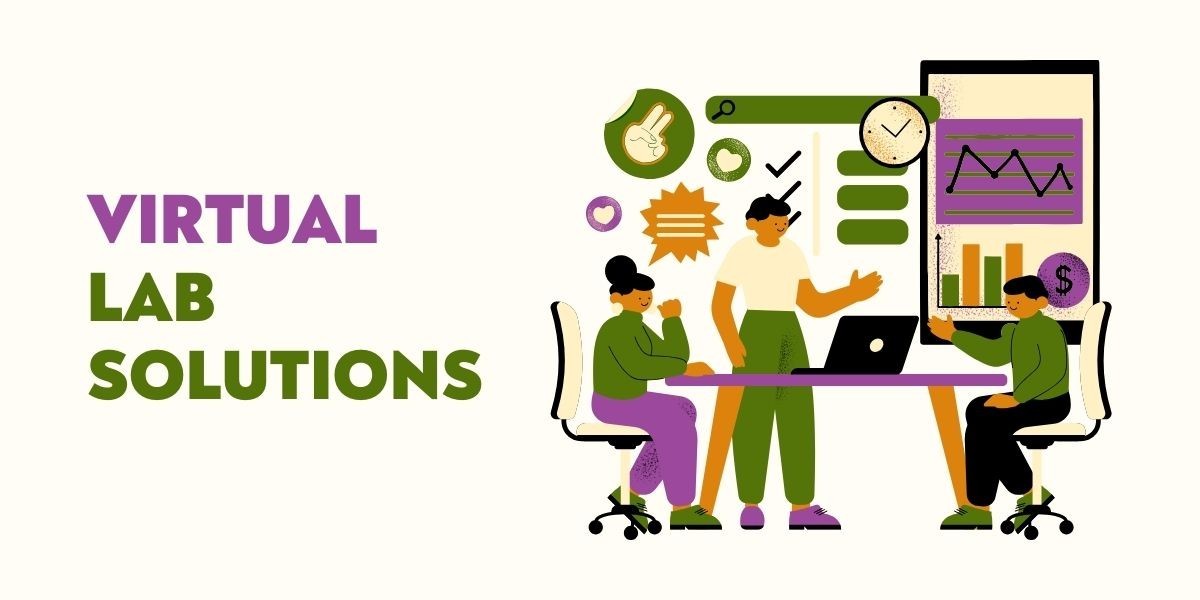Modern learning and education systems require innovative solutions for handling the emerging needs of the learners. Digital advancements like learning management systems and virtual lab solutions help trainers offer the best learning benefits. Integrating technology with the learner's needs is best met with virtual lab services.
Virtual labs enhance the role of the simulations and practical experiences while overcoming physical constraints. This article digs deep into the role of virtual labs in making students ready for real-world challenges.
Importance of Virtual Lab Solutions in Making Students ready for Practical Challenges
Here are the key pointers highlighting the role of virtual labs in making students prepared for practical challenges:
Improved Content Flexibility and Accessibility
Firstly, the key benefit of the virtual labs is their inherent capacity to improve content flexibility and accessibility. Traditional laboratories face several constraints like safety concerns, expensive equipment costs, and limited spaces.
Virtual labs present the best solutions to the physical barriers for helping students perform complex experiments without any limitations. This accessibility helps students from remote locations, diverse backgrounds, and underprivileged sections to develop scientific skills like the general learners.
Further, these labs are available to students to offer easy revisit to complex subjects and conduct experiments at their own pace.
Promoting Risk-free and Safe Experimentation
Traditional lab solutions come with safety concerns when it is dealing with complex processes or hazardous materials. So, it is essential to protect students from harm while encouraging them to conduct complex experiments safely.
Virtual lab solutions focus on the benefits of safety as the experiments are conducted in a controlled and simulated environment. All the experiments with intricate machinery, high temperatures, and dangerous chemicals can be easily performed without the fear of real-world consequences.
Hence, an overall culture of experimentation and curiosity prevails where students can learn from mistakes, learn from mistakes, and understand complex concepts without any dangers. Virtual labs make students learn critical thinking and problem-solving skills required in real-world engineering and scientific fields.
Creation of Analytical Skills, Technical Skills, and Collaborative Learning
Moving ahead, the traditional lab setups fail to develop the technical and analytical skills of students. Virtual labs make students proficient in the use of data analysis and modern technology methods.
The skills, hence learned, offer data-driven decision-making and confidence in using digital tools. The different features in the virtual labs cover the use of visualization tools, analysis, and data collection abilities like the ones used in professional settings.
Students when using the virtual labs can learn how to optimize experiments, troubleshoot issues, and interpret data precisely. The use of emerging technologies like artificial intelligence, machine learning, and others prepares students for future technology applications.
Students working on the virtual experiments together can discuss their findings in real time, share results, and work together on different experiments.
Bridging the gap between the Practice and Theory
Virtual lab e-learning solutions are the right catalyst to bridge the gap between practical and theoretical learning. Students learn abstract concepts without the opportunity to see them in the traditional lab settings which creates significant knowledge gaps.
The interactive simulations offered by virtual labs help in the right illustration of the theoretical principles in the practical context. Virtual engineering labs simulate the behavior of the mechanical systems allowing students to see the real-world implications of the theoretical concepts.
The virtual chemistry labs help students to visualize reaction mechanisms and molecular interactions which are difficult for them to grasp through the text only. This integration of practical and theoretical knowledge promotes comprehension and retention.
Virtual Lab Solutions: Preparing for Future Challenges with the Right Use of Technology
Technology plays a crucial role when it comes to focusing on virtual lab solutions for meeting future student needs. It helps cater to the changing nature of work and challenges by using cutting-edge technologies and methodologies.
The engagement of students with digital tools and simulations helps students adapt to new developments and technological innovations. The inclusion of the latest scenarios reflecting the industry trends and real-world problems helps in learning key issues that are relevant in the currency world.
Hence, students get an opportunity to learn about these upcoming trends and problems that they are set to face in the future.
Contact us at https://www.acadecraft.com/contact-us/ to learn more about our Virtual Lab Solutions.
Virtual Lab Solutions: Optimized Implementation Strategies
Last but not least, the role of the virtual labs is enhanced with the right implementation of these strategies into the educational and learning programs. The integration of the virtual labs into the curriculum complements the traditional lab learning program.
Trainers get a chance to design assessments and assignments to unlock the best use of the virtual labs. The training of the educators can significantly contribute to the best use of the virtual labs for effective benefits.
The consistent evaluation and the updates to the virtual labs help students learn the industry trends and technological advancements. Instructors can offer the right strategies for adding them to the existing lessons.
Wrapping Up
Virtual lab solutions play a crucial role in managing the students prepared for real-world challenges. It is easy to understand improved content flexibility, promoting risk-free experimentation, creating analytical skills, and enhancing teamwork.
Further, virtual labs help bridge the gap between practice and theory, preparing students for future challenges, and optimizing the right implementation strategies.









